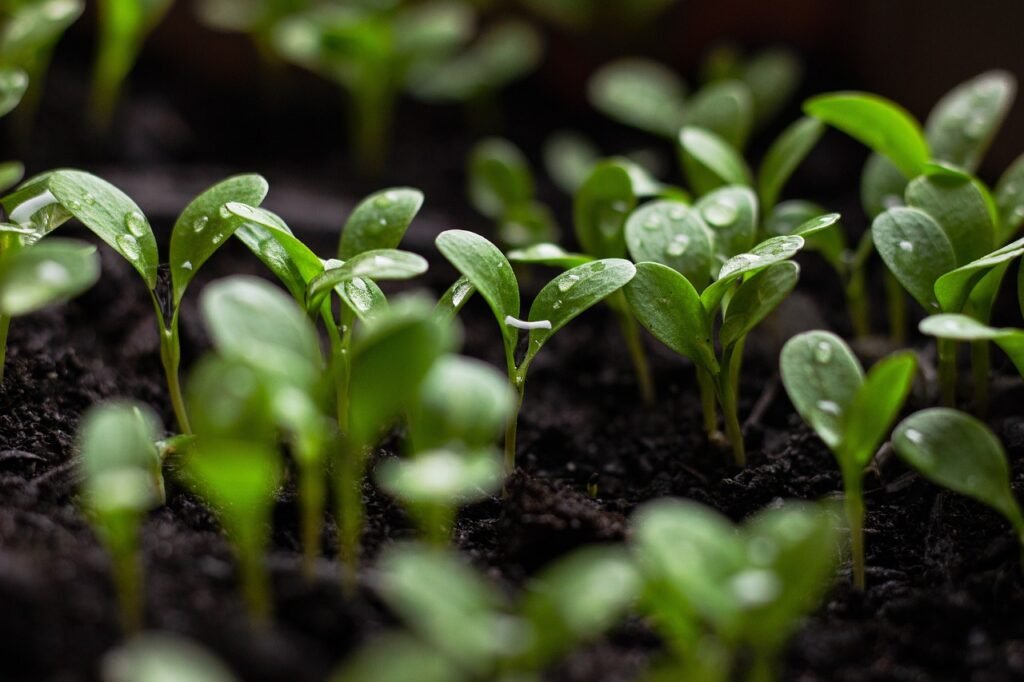Imagine a future where every strand of hair in your weave is not only beautiful but also sustainably produced. In this article, we will explore the fascinating world of human hair weave production and how sustainable practices are being introduced to create a greener future. From innovative recycling techniques to ethically sourced materials, we will uncover the steps being taken to ensure that our love for fabulous locks doesn’t come at the expense of our planet. Get ready to be inspired by the efforts being made to transform the hair industry into an environmentally friendly one.

This image is property of pixabay.com.
Sustainable Sourcing of Hair
Ethical collection of hair
When it comes to sustainable sourcing of hair for human hair weaves, ethical collection practices are of paramount importance. This means ensuring that the hair is sourced in a manner that respects the rights and dignity of the individuals donating their hair. It involves working with reputable suppliers who have established fair trade practices and who prioritize the welfare of their hair donors. By adhering to ethical collection practices, the weaving industry contributes to the overall sustainability of the supply chain.
Use of recycled or upcycled hair
Another sustainable approach to sourcing hair for weaving is through the use of recycled or upcycled hair. This involves repurposing hair that would otherwise go to waste, such as hair clippings from salons or hair collected from brushes. By repurposing these materials, the weaving industry reduces its demand for new hair and decreases the environmental impact associated with traditional sourcing methods. This innovative approach not only promotes sustainability but also adds value to materials that would have otherwise been discarded.
Supporting fair trade practices
Supporting fair trade practices is an integral part of sustainable sourcing in the human hair weaving industry. This means working with suppliers who ensure fair wages, safe working conditions, and respect workers’ rights. By prioritizing fair trade, the industry contributes to the economic development of communities involved in hair collection and manufacturing. Supporting fair trade practices also helps prevent exploitation and ensures that all individuals involved in the supply chain are treated with fairness and dignity.
Eco-Friendly Hair Processing
Chemical-free hair processing methods
In the pursuit of sustainability, the human hair weaving industry is increasingly turning to chemical-free hair processing methods. By using natural and non-toxic alternatives, such as plant-based dyes and gentle cleansers, the industry minimizes its environmental impact while still achieving high-quality results. Chemical-free processing not only reduces the release of harmful substances into the environment but also promotes the overall health and well-being of the individuals wearing the hair weaves.
Water conservation techniques
Water is a precious resource, and the human hair weaving industry recognizes the importance of conserving it. By implementing water conservation techniques, such as recycling and reusing water during the production process, the industry reduces its water consumption and minimizes its impact on local water sources. These techniques may include installing water filtration systems to purify and reuse water, as well as optimizing equipment and processes to minimize water waste.
Energy-efficient processing technologies
Energy efficiency is a key aspect of eco-friendly hair processing in the weaving industry. By investing in energy-efficient processing technologies, such as low-energy hair drying techniques and energy-saving equipment, manufacturers can significantly reduce their carbon footprint. This not only helps protect the environment but also lowers operational costs, making sustainability a financially sound choice. Energy-efficient processing technologies allow the industry to meet the increasing demand for hair weaves while minimizing its environmental impact.

This image is property of pixabay.com.
Reducing Waste in Hair Weave Production
Minimizing hair waste during collection
Efforts to reduce waste in hair weave production start from the very beginning – during the collection process. By implementing practices that minimize hair waste, such as using precise cutting techniques and properly separating different hair lengths and types, the industry ensures that every strand of hair is utilized. This attention to detail helps reduce the overall volume of hair waste and maximizes the value and sustainability of the materials.
Recycling and repurposing hair trimmings
Hair trimmings that occur during the weaving process can also be repurposed to minimize waste. These trimmings, which would otherwise be discarded, can be collected and recycled into various products, such as hair accessories or even compost for gardening purposes. By repurposing hair trimmings, the industry reduces waste, promotes circularity, and demonstrates its commitment to sustainable practices.
Environmentally friendly packaging options
Packaging plays a significant role in the overall sustainability of the human hair weaving industry. By opting for environmentally friendly packaging options, such as reusable containers or biodegradable materials, the industry minimizes its ecological footprint. Additionally, companies can explore packaging alternatives that use less material or choose designs that maximize space efficiency during transportation. Considering the entire life cycle of the packaging, from production to disposal, is crucial for a sustainable approach.
Employing Sustainable Packaging
Biodegradable packaging materials
One way to ensure sustainable packaging in the human hair weaving industry is through the use of biodegradable materials. These materials break down naturally without causing harm to the environment. By choosing biodegradable packaging options, the industry reduces its contribution to landfill waste and promotes a greener future. Whether it’s using biodegradable plastic pouches or compostable cardboard boxes, the industry can embrace packaging solutions that align with its commitment to sustainability.
Use of recycled or recyclable packaging
Another aspect of sustainable packaging is the use of recycled or recyclable materials. By utilizing packaging that is made from recycled materials or can be easily recycled after use, the industry reduces the demand for new resources and minimizes waste generation. This approach emphasizes the importance of the circular economy, where materials are reused and repurposed instead of ending up in landfills. Not only does this benefit the environment, but it also sends a positive message to consumers who prioritize sustainability.
Reducing excess packaging
Over-packaging is a common issue in many industries, including human hair weaving. To promote sustainable practices, it is crucial to reduce excess packaging. By optimizing the size and dimensions of packaging materials to fit the product efficiently, the industry can minimize waste and decrease the carbon footprint associated with transportation. Reducing excess packaging not only saves resources but also improves the overall sustainability of the product.

This image is property of pixabay.com.
Implementing Responsible Manufacturing Practices
Adopting renewable energy sources
Responsible manufacturing practices in the human hair weaving industry include the adoption of renewable energy sources. By transitioning to renewable energy, such as solar or wind power, manufacturers can significantly reduce their reliance on fossil fuels and decrease carbon emissions. This shift towards renewable energy not only contributes to the global fight against climate change but also demonstrates a commitment to sustainable production methods.
Reducing carbon emissions
Efforts to reduce carbon emissions should be central to sustainable manufacturing in the human hair weaving industry. By implementing energy-efficient processes, optimizing transportation routes, and exploring carbon offsetting initiatives, manufacturers can minimize their greenhouse gas emissions. Additionally, by regularly assessing and improving their manufacturing practices, the industry can continuously find innovative ways to reduce its overall environmental impact.
Sustainable waste management
Proper waste management is a crucial aspect of responsible manufacturing in the human hair weaving industry. By implementing sustainable waste management practices, such as segregating waste for recycling or partnering with recycling facilities, manufacturers can minimize the amount of waste that ends up in landfills. This approach ensures that materials are disposed of in an environmentally friendly manner and promotes a circular economy where waste becomes a valuable resource.
Promoting Ethical and Fair Working Conditions
Ensuring fair wages and safe working conditions
The human hair weaving industry must prioritize fair wages and safe working conditions for all individuals involved in the production process. By ensuring fair compensation and providing a safe and healthy work environment, companies can promote the well-being of their employees and contribute to sustainable development. Fair wages enable workers to support themselves and their families, while safe working conditions protect their physical and mental health.
Supporting workers’ rights and welfare
Supporting workers’ rights and welfare is a fundamental aspect of promoting ethical practices in the human hair weaving industry. This means respecting workers’ right to organize, ensuring equal opportunities, and providing access to social benefits. By partnering with organizations that promote workers’ rights and welfare, the industry demonstrates its commitment to creating a more just and sustainable society.
Responsible labor sourcing
Responsible labor sourcing is another key component of ethical and fair practices in the human hair weaving industry. This involves conducting thorough due diligence to ensure that suppliers adhere to fair labor practices, do not employ forced or child labor, and comply with all relevant regulations. By sourcing labor responsibly, the industry can actively contribute to preventing human rights abuses and promoting social justice.
Supporting Local Communities
Partnering with local organizations
To support local communities, the human hair weaving industry can establish partnerships with local organizations. These partnerships can be focused on initiatives such as education, skill development, and healthcare. By working together with local organizations, the industry can contribute to the overall well-being and development of communities involved in hair collection and manufacturing. This collaboration strengthens the social fabric of the communities and establishes long-term relationships based on mutual respect and shared prosperity.
Investing in community development projects
Investing in community development projects is an effective way for the human hair weaving industry to support local communities. This can include initiatives aimed at improving infrastructure, providing access to clean water and sanitation, or promoting entrepreneurship. By investing in community development, the industry helps create sustainable livelihoods and improves the quality of life for individuals and families in the communities it operates in.
Providing employment opportunities
One of the most direct ways the human hair weaving industry can support local communities is by providing employment opportunities. By offering fair and stable employment, the industry helps uplift individuals and families out of poverty and provides them with a means to support themselves. Additionally, by prioritizing local workforce development and training programs, the industry contributes to the overall economic growth of the communities it operates in.
Ensuring Product Durability
Quality control measures
To ensure product durability, the human hair weaving industry must implement rigorous quality control measures. This involves conducting thorough inspections of the hair weave materials and ensuring that they meet the highest standards of quality. By maintaining strict quality control, manufacturers can provide customers with hair weaves that are long-lasting, resilient, and able to withstand regular use. This not only enhances customer satisfaction but also reduces the need for frequent replacements, ultimately contributing to sustainability.
Long-lasting hair weave materials
Choosing long-lasting hair weave materials is an essential factor in ensuring product durability. By using high-quality hair that has undergone proper processing techniques, the industry can produce hair weaves that maintain their integrity and appearance for an extended period. Investing in durable materials minimizes the frequency of replacements, reduces waste generation, and prolongs the life cycle of the products.
Promoting repair and reuse
Promoting repair and reuse is another way the human hair weaving industry can ensure product durability. By providing repair services and encouraging customers to reuse their hair weaves, the industry reduces waste and contributes to a circular economy. Additionally, manufacturers can offer resources and guidance to customers on how to properly maintain and care for their hair weaves, thereby extending their lifespan and promoting sustainable consumption practices.
Educating Consumers about Sustainability
Promoting awareness through marketing
Educating consumers about sustainability begins with effective marketing campaigns that highlight the industry’s commitment to sustainable practices. By showcasing the environmental and social benefits of choosing sustainable hair weaves, companies can raise awareness and inspire conscious consumer choices. Promoting sustainability in marketing messages helps consumers make informed decisions and actively contribute to a greener future.
Providing information on sustainable practices
To empower consumers, the human hair weaving industry can provide information on sustainable practices and the importance of ethical sourcing. This can include details about the supply chain, certifications, and standards that ensure sustainable production. By sharing this information, the industry helps consumers better understand the impact of their purchasing decisions and encourages them to support brands that prioritize sustainability.
Encouraging conscious consumption
Encouraging conscious consumption is a pivotal aspect of educating consumers about sustainability in the human hair weaving industry. This means promoting the idea of buying only what is truly needed, choosing high-quality products that last, and prioritizing ethical and sustainable options. By fostering a culture of conscious consumption, the industry can reduce waste, minimize environmental impact, and create long-term positive change.
Collaboration and Innovation in the Industry
Sharing best practices
Collaboration and the sharing of best practices are key to driving sustainability in the human hair weaving industry. By creating platforms for industry-wide collaboration and knowledge exchange, manufacturers, suppliers, and stakeholders can work together to identify and implement sustainable practices. Sharing successes, challenges, and innovative solutions ultimately leads to collective progress and a more sustainable future.
Investing in research and development
Investing in research and development is essential for driving innovation and advancing sustainability in the human hair weaving industry. By allocating resources to research new techniques, materials, and technologies, the industry can continuously improve its practices and reduce its environmental impact. Innovation can lead to breakthroughs such as more sustainable dyeing methods, environmentally friendly manufacturing processes, and the development of new, eco-friendly materials.
Encouraging industry-wide sustainability initiatives
To further advance sustainability, the human hair weaving industry can encourage and support industry-wide sustainability initiatives. This can involve establishing industry-wide certifications, standards, and guidelines that promote environmentally friendly practices and ensure ethical sourcing. By collectively working towards shared goals, the industry can enhance its overall sustainability and make a lasting positive impact.
In conclusion, sustainable practices in human hair weave production encompass various aspects such as ethical sourcing, eco-friendly processing, waste reduction, responsible manufacturing, fair working conditions, community support, product durability, consumer education, and industry collaboration. By embracing these practices, the human hair weaving industry can minimize its environmental impact, contribute to social development, and pave the way for a greener future.
